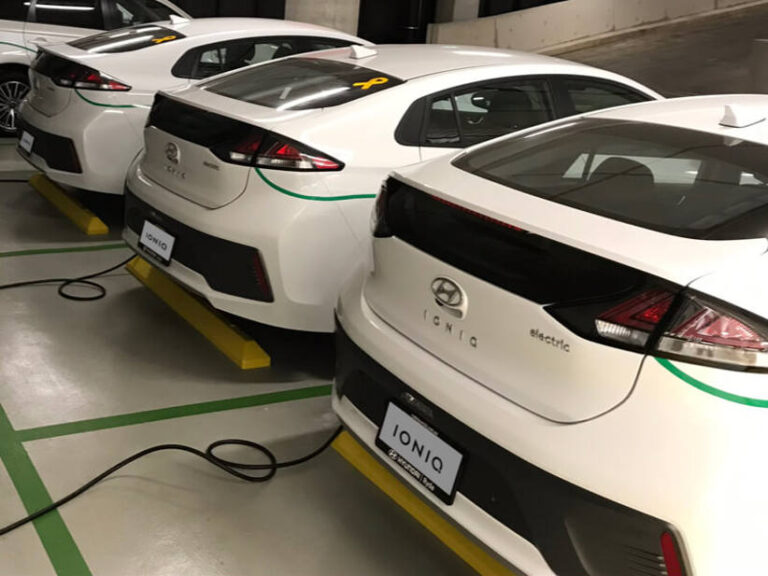This article was originally published by Fleet News.
Fleet operations in the UK are best placed to switch their cars and vans from petrol and diesel to electric vehicles (EVs).
That’s according to telematics provider Webfleet Solutions, which has analysed data from around 100,000 connected vehicles, operated by more than 5,000 fleet customers across Europe.
The Bridgestone-owned company has found that more than two thirds (70%) of cars and light commercial vehicles (LCVs) currently being used commercially in the UK could be replaced by electric models. That’s compared to European average of 61%.
Taco van der Leij, vice president of Webfleet Solutions Europe, said: “For somebody managing a commercial fleet, one question is particularly important when considering switching to electric vehicles – will an EV be capable of efficiently and safely completing the sort of trips my vehicles take on a daily basis?
“Telematics data can help answer this question and actively support fleet managers in the electrification process.
“By aggregating this data from thousands of vehicles on the road, it serves as one important indicator to evaluate the potential of fleet electrification for commercial fleets across Europe.”
By using the Fleet Electrification Planning Report, a new feature of the Webfleet fleet management solution, recommendations can be made on which internal combustion engine (ICE) vehicles can be replaced with electric alternatives, based on daily driven distances.
It was concluded, for the purposes of the research, that if a vehicle drove less than 300km (186 miles) per day over a 12-month period, it could be replaced with an EV. The 300km (186 miles) maximum daily driving distance was chosen to reflect the average range of the most common, available electric car and LCV models.
The data shows that the UK is ahead of its European counterparts when it comes to EV uptake potential.
In all countries examined, at least half of all business cars and LCVs could be replaced by EVs, with the UK reporting the highest electrification potential.
It came out top, with 70% of business cars and LCVs that could be electrified, followed by the Netherlands (69%), France (67%) and Germany (61%).
Interestingly, these countries also have a high availability of charging points. Of the 144,000 charging points available across the European Union and UK today, the majority are located in the Netherlands (26%), Germany (19%), France (17%) and the UK (13%).
Many major European cities have also enacted severe restrictions to cut carbon emissions. London, for example, aims to be emissions free by 2040 for all vehicles.
Alongside restrictions, incentives such as significant tax cuts and purchasing grants are available to buyers of EVs for both private and business use across many regions, says Webfleet Solutions.
The research has been published after new figures showed businesses are twice as likely as consumers to make the switch from petrol or diesel to an EV.
Analysis of new car registrations in 2020 by the the Society of Motor Manufacturers and Traders (SMMT) shows that just 4.6% of privately bought cars were battery electric vehicles (BEVs) – compared to 8.7% for businesses and large fleets.
In total, consumers registered 34,324 BEVs in 2020, compared to 73,881 corporate registrations.
“The trip distance is only one part of the puzzle,” explained Van der Leij. “For example, costs, local charging infrastructure and the charging time of EVs are also important factors for fleets trying to determine if EVs are a practical fit for them.
“The data is clear on this. The trips being taken by the vast majority of business cars and LCVs in the sectors we analysed could also be made by electric vehicles. This will hopefully offer even more encouragement to the many businesses across Europe with ambitions to add EVs to their fleets.”
Webfleet Solutions analysed aggregated and anonymised driving data from 12 months for more than 5,000 fleets across Europe that use the Webfleet fleet management platform.
This analysis took in data from around 100,000 vehicles. The sample only included fleets that use cars and LCVs.
The business sectors included in the research are technical installation and repairs, passenger transport, food and beverage and professional services, such as service and maintenance, repair services and field services.
The data was analysed from connected vehicles across Europe in the following countries: Austria, Belgium, France, Germany, UK, Italy, the Netherlands, Spain and Poland.
[news_list display=”category” format=”” category=”34″ show_more=”on”]






